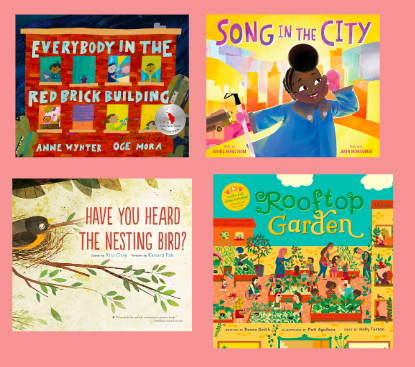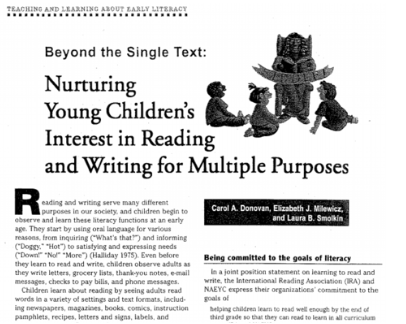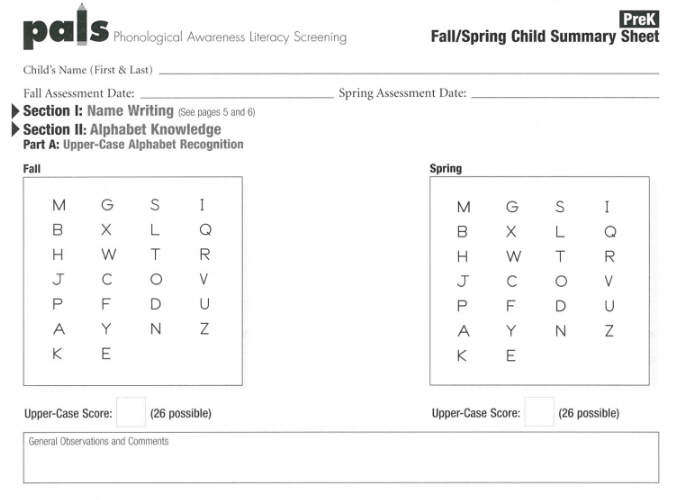Focus on 4s
Resources
Unit 1: Together in Our Community
The primary goal for the first unit of study, Together in Our Community, is for children and teachers to build the foundation for a strong community of learners—developing caring and respectful relationships and routines and expectations for how the classroom works. From the very first day of school, children and adults share experiences with stories and in play, exploring what it means to be in school, feelings, identity and family, and community. They develop shared ways of interacting, solving problems, and doing and making things. They begin a year-long study of weather. The eight-week unit closes with a Showcase of Learning for families and other community members, displaying children’s self-portraits and celebrating their launch to the school year.
Each week below contains an At a Glance, teacher-led lessons, Centers activities, and additional resources for each component, Home Links, and a folder of adapted resources.
All introductory documents for Unit 1 (See introductory documents for the full Pre-K curriculum here.)
Introduction | Arc of Unit | Vocabulary List | Writing Basics
Digital Arc of Unit (with embedded links to lessons)
Family Letter | editable version | translations | Home Links
Week 1 | Week 2 | Week 3 | Week 4 | Week 5 | Week 6 | Week 7 | Week 8
Unit 2: Building Our Working City
As children look around the city where they live, as they listen to the sounds it makes and see the people who populate it, they might begin to wonder what makes the city function. Who does what? What purpose does this serve? Why is it organized or built that way? What else can we imagine? In the this unit of study children and adults build on the community they have formed and the systems they have routinized in Unit 1 to learn together about some of the structures, features, and people that make things happen in the city around us. In the last two weeks of the unit, children create a model of a city street—including elements and features of a working city: transportation, communication, and infrastructure systems, construction, public art, and people’s roles.
All introductory documents for Unit 2 (See introductory documents for the full Pre-K curriculum here.)
Introduction | Arc of Unit | Texts | Vocabulary List | Writing Personal Recount | Writing Procedure
Digital Arc of Unit (with embedded links to lessons)
Family Letter | editable version | translations | Home Links
Week 1 | Week 2 | Week 3 | Week 4 | Week 5 | Week 6 | Week 7 | Week 8
Unit 3: Animals All Around
Children tend to be fascinated by animals. In this unit, children notice and learn about animals in the immediate, urban environment, those that live outside the city but still close by (in Massachusetts), and those that live in the ocean. They also make direct connections between themselves and other animals. Throughout, children entertain questions about how animals live in their environments: Why and how do animals communicate? What body parts do different animals have, and how do they use those parts to help them live? How do animals move? How do we move? We also continue the year-long thread about weather, by considering how animals respond to varying weather and seasonal conditions. Towards the end of the unit, children’s knowledge about animals is incorporated into a class play!
All introductory documents for Unit 3 (See introductory documents for the full Pre-K curriculum here.)
Introduction | Arc of Unit | Vocabulary List | Writing Procedure | Writing Report
Digital Arc of Unit (with embedded links to resources)
Family Letter | editable version | translations | Home Links
Week 1 | Week 2 | Week 3 | Week 4 | Week 5 | Week 6 | Week 7 | Week 8
Unit 4: Growing and Changing
All year long, children have been changing, and they will continue to do so as they move into the summer and perhaps a new school environment in September. This final unit, Growing and Changing, celebrates the multiple dimensions of children’s growth and encourages them to notice, wonder about, and represent other living things as they also change and grow. Children start plants and observe butterflies as they change from caterpillars to adults, recording what they notice. How does a seed become a plant? How does a baby become an adult? What changes can we observe? What impacts the growth and health of living things? To close the unit and the school year, children set up a Growing Gallery, sharing how they have grown and changed and their ideas about that, and sharing their work across the unit as their understanding about living things has grown and they look across their experience together and toward what comes next.
All introductory documents for Unit 4 (See introductory documents for the full Pre-K curriculum here.)
Introduction | Arc of Unit | Vocabulary List | Writing Report
Digital Arc of Unit (with embedded links to resources)
Family Letter | editable version | translations | Home Links
Week 1 | Week 2 | Week 3 | Week 4 | Week 5 | Week 6 | Week 7 | Week 8










